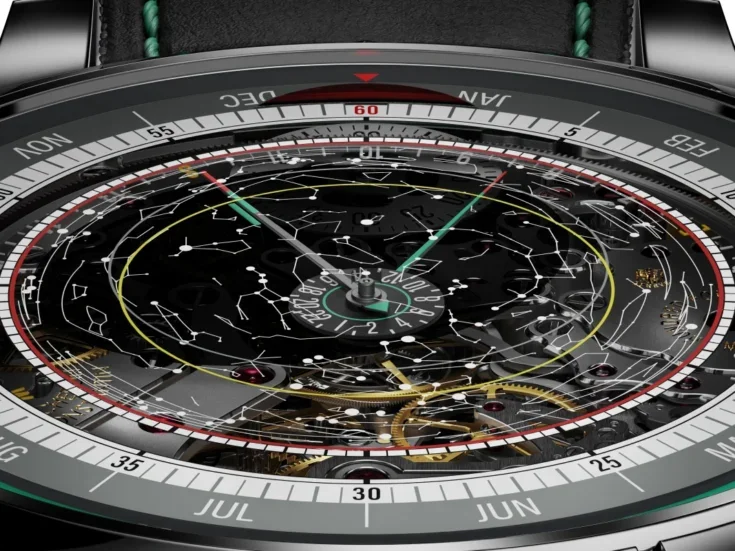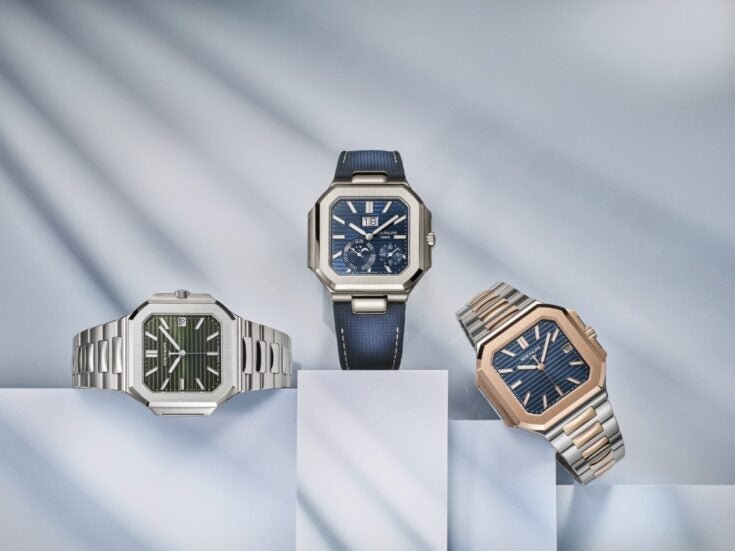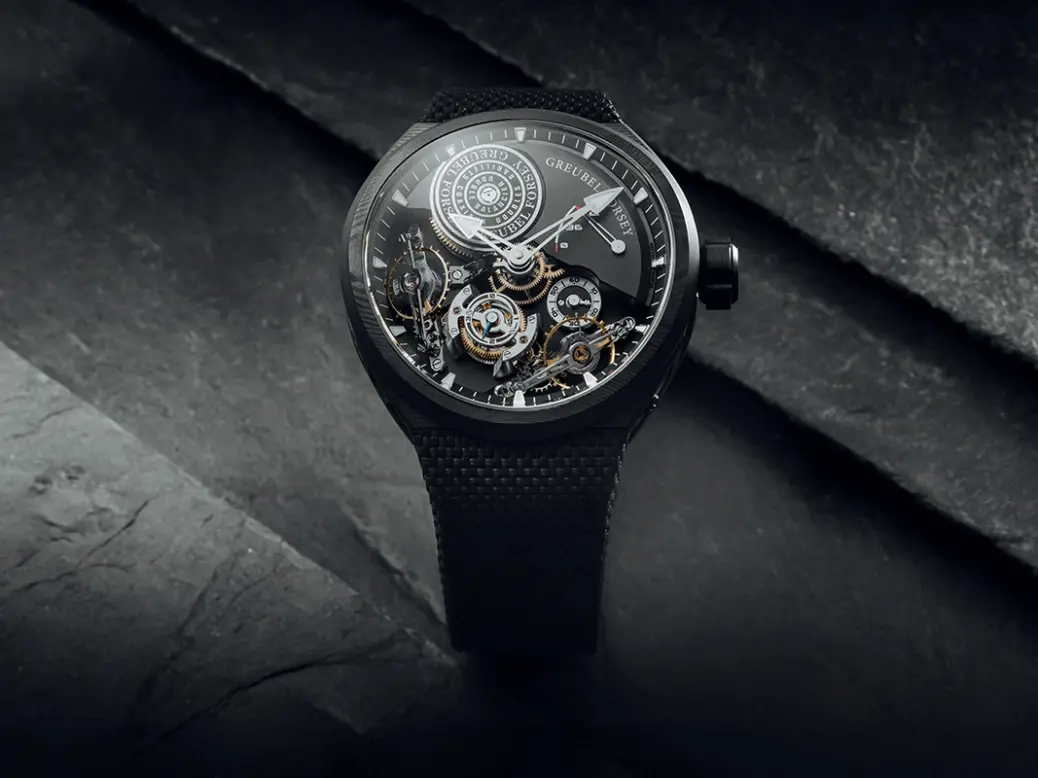
I remember the first time I encountered a carbon fibre wristwatch: it was so light, comparable to its size, that it felt like picking up a plastic toy. That was in 2010, when I was first covering the watch industry, and the piece in question, Audemars Piguet’s Royal Oak Offshore Grand Prix, was for a moment the coolest, edgiest sports watch on the market.
True to its soubriquet, it had a funky red/gold dial inspired by racing cars, but its star feature was its case, which resembled a piece of tactical sci-fi gear: not just astonishingly light but also architecturally complex, with a dark, weirdly mottled surface that was highly singular at the time and mysteriously alluring.
[See also: Partners in time: the luxury watch collaborations worth knowing]
Carbon fibre, extremely rigid and far stronger than steel and yet incredibly light, was by then a well-established miracle material for all kinds of high-performance applications. Formed by layering up minutely thin carbonised strands, impregnating them with epoxy resin and bonding them under high pressures and temperatures, the various composites could be found in anything from aerospace components and Formula One cars to wind turbines and bike frames.
In luxury watches, where brands were searching for exotic but ultra-modern materials to counterbalance the weighty, old-world extravagance of precious metals, carbon fibre was a coming force.
Carbon fibre: the first act
The first movers were Richard Mille (which had already used it to make the base- plate for a watch movement in 2004) and Audemars Piguet – and the latter was in with both feet, having made the investment of an in-house production unit for forged carbon, the ultra-compressed and moulded formulation it was using.
By 2015, though, it was out. Should you ever find one of those Grand Prix models on the aftermarket, you’ll see one reason why: the forged carbon may have been super-strong, but it also scratched and frayed easily, and well-worn examples can look exceedingly beaten up. AP, under its new CEO at the time François-Henry Bennahmias (who recently left the brand after a transformative tenure), instead piled its energy and investment into harder, scratch-proof ceramic. This was a good move: its ceramic models, worked to an extreme level of refinement, carry a cachet equivalent to its gold watches.
[See also: Forget stealth wealth, Patek Philippe’s new women’s models are unashamedly opulent]
The story of the evolution in high-tech watch materials since then has to some extent been a toss-up between carbon-based composites and ceramic. The latter has been enjoying the upper hand. Besides not scratching, ceramic can nowadays be made in bright colours, to crisper geometries and finishes, and with textural uniformity.
Carbon fibre may be lighter (and the various composites and specialist fabrication processes have largely evolved to eliminate the problems faced by those old AP models), but the inherent patterning of its surface, whether designed or randomised, is polarising, while proliferation to lower price points has tarnished the sense of exclusivity and exoticism. It hardly helped that the most recognised form of carbon fibre, that glossy, cross-hatched weave associated with F1 cars, was written off as irredeemably naff at least a decade ago, after it was co-opted for show-off luggage, spectacles cases, hi-fi speakers and pretty much any tacky, midlife crisis accessory you could name.
So, in 2024, I honestly wasn’t expecting to be writing about carbon fibre’s second coming in watches. But a series of recent launches from distinctly highbrow makers suggests that, so long as you’re into the idea of something stylistically quirky and highly engineered, there’s life – and a measure of prestige – in the wonder material yet.
Greubel Forsey leads the way
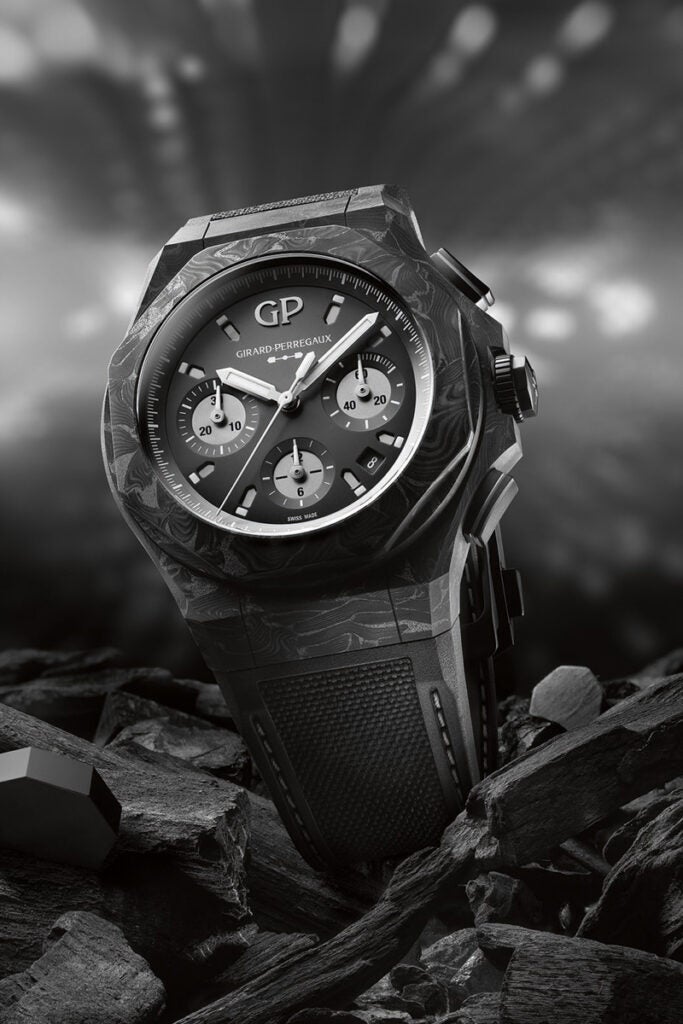
Of particular note is its adoption by the boutique maker of perhaps the most highly evolved luxury watches in existence, Greubel Forsey. Founded 20 years ago, it’s an independent brand known for mixing dizzying complexity with a level of horological craft that leaves all-comers in the dust. In its exceptionally rarefied world (it makes around 250 watches a year), spending days if not weeks hand-polishing a single part, for timepieces festooned with tourbillons, displays, openings, layers and technical devices, is par for the course. So is paying £250,000 for the chance to own one, though the figure is often considerably higher than that.
[See also: Audemars Piguet takes home coveted top prize at ‘Oscars of watchmaking’ in Geneva]
Having established itself with gloriously lavish creations in precious metals, Greubel Forsey has transitioned in the past two years to a sportier (and genuinely more wearable) incarnation. With curvy, streamlined case designs in lightweight, highly polished titanium, its new generation watches are designed to appeal to a younger, more casual cohort of UHNW collector – though a carbon fibre Greubel Forsey, unthinkable not long ago, takes things a step or three further. And despite working with an ostensibly industrial material that defies hand finishes, it applies a technical approach that is monumentally exacting and, unbelievably, hand-finished.
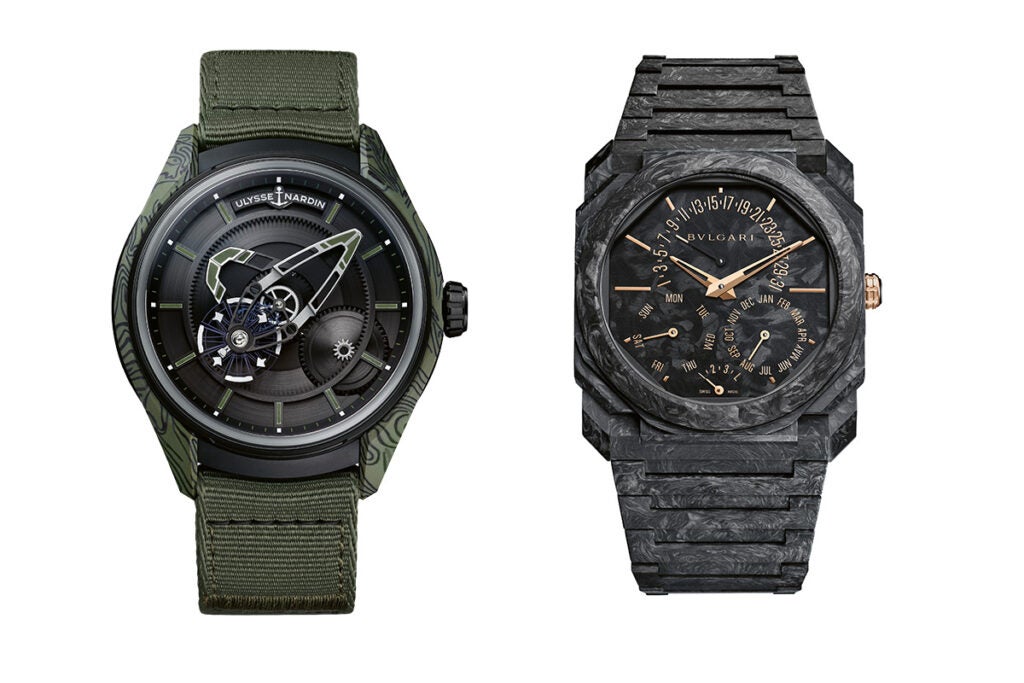
For the Double Balancier Convexe Carbon (£314,000), it has developed a version of carbon fibre so dense that it can be smoothed and buffed in the workshop. I’m told that the fibres, just a micron or so thick, are packed together under 16 tonnes of pressure, about eight times more than what’s used for a standard composite; that means many more layers can be packed in. Moreover, the direction and striation of the fibres are meticulously controlled, and this extends into the carbon fibre dial too. The result is a kind of uniform grain that gives the impression of a watch – lest we forget to mention, containing one of the most complex and crafted haute horlogerie mechanisms ever conceived – cut from a perfect block of charcoal, and weighing about the same.
Quite different, and more obviously statement-making, is the intense, dappled variegation of Girard-Perregaux’s Laureato Absolute Chronograph 8Tech (£23,600), which is achieved by mixing the carbon fibres with titanium powder. The appearance is like a high-contrast Damascene steel, and a universe away from the woven threads of a City boy’s carbon fibre credit card holder circa 2010.
With Ulysse Nardin’s Freak X Ops (£29,700), the look is even more far-out. The Freak is the brand’s flagship avant-garde watch, in which the entire movement is condensed into a carousel that rotates each hour, operating as the hour hand. For this punky iteration, the sides of the case feature carbon fibre fused with olive green resin, giving it a militaristic look.
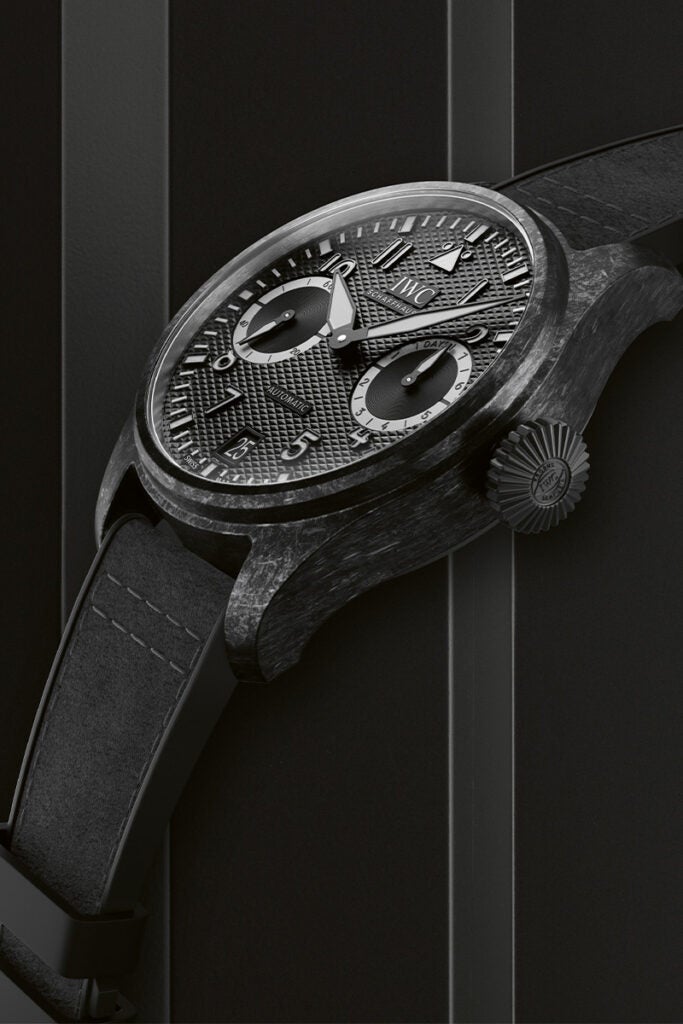
Italian jeweller Bulgari, meanwhile, has found a way to do a kind of formal, black-tie version of forged carbon with its Octo Finissimo Perpetual Calendar CarbonGold (approx. £71,000). Bulgari’s original ‘Carbon-Gold’ models were made in the early Nineties, mixing gold detailing with black ‘carbon’ dials and cases that were actually just, er, plastic. This time things are elevated in suitably decadent, Romanesque style, with sheeny, swirling anthracite composite resembling black marble, offset with hands and indices in lustrous rose gold.
We started with a petrolhead watch, and we’ll end there too. IWC’s Big Pilot’s Watch AMG G 63 (£29,900) is part of the brand’s long-term partnership with Mercedes, and of a piece with the carmaker’s brutish ultra- luxe SUV, the AMG G 63. Accordingly, it’s a burly 46mm in diameter, meaning only those with tree-trunk-thick wrists need apply; but at least the carbon composite case keeps things lightweight, while also moving the technical story on a few degrees.
Rather than the watch being bonded in a polymer substance, IWC says it worked with the German Aerospace Center, a national research facility, to magic up a ceramic-derived bonding for the fibres, a form of ‘ceramic matrix composite’ (CMC). With a dark, stony finish, this material is apparently considerably harder and more damage-resistant than other forms of carbon fibre. And it also provides one solution to the problem of whether to go with a carbon fibre or ceramic watch – just choose both.
This feature was first published in Spear’s Magazine Issue 90. Click here to subscribe


